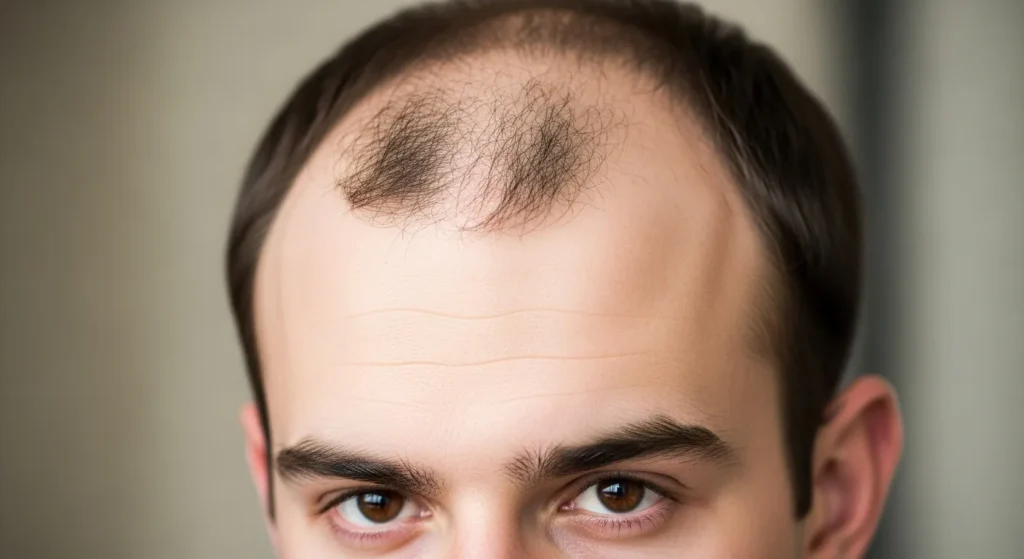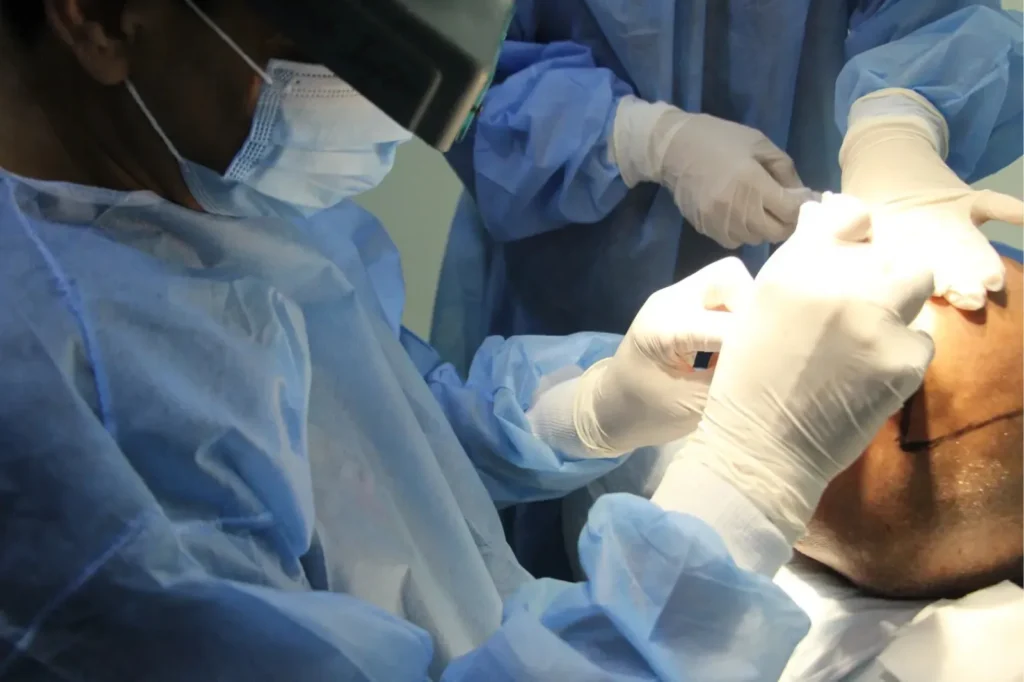Hair thinning or bald spots can seriously impact your confidence—if you’ve been searching for hair loss treatment in Austin, you’re not alone. This guide lays out proven solutions—from FDA-approved topicals to advanced in-office procedures—alongside real Austin patient stories, local expert advice, and clear recovery timelines.
You’ll learn how to choose the right clinic, what to expect at each stage, and how to care for your hair post-treatment. Trustworthy, dermatologist-backed insights help you make informed decisions and regain a fuller head of hair.

Why People Face Hair Loss in Austin
Common Causes of Hair Loss
Hair loss can occur due to a variety of reasons:
- Androgenetic Alopecia (Male/Female Pattern Baldness) – The most common cause, driven by genetics and hormonal shifts.
- Telogen Effluvium – Triggered by stress, illness, or medication changes.
- Alopecia Areata – An autoimmune condition causing patchy hair loss.
- Traction Alopecia – Resulting from tight hairstyles, braiding, or extensions.
Environmental & Lifestyle Factors Unique to Austin
Austin’s environment and lifestyle may exacerbate hair loss:
- Hard water may affect scalp health.
- Excessive heat and sun exposure can dry out follicles.
- Active lifestyles (cycling, swimming, fitness) may increase sweating, which affects scalp hygiene if not managed properly.
- Stress and fast-paced living in urban centers like Downtown or South Congress can lead to hormonal imbalances.
Comparing Top Hair Loss Clinics in Austin
Austin is home to some excellent hair restoration centers. Here’s a brief comparison:
| Clinic | Treatments Offered | Board-Certified? | Location |
|---|---|---|---|
| McGrath Medical | FUE, PRP, Exosomes | Yes | North Austin |
| Westlake Dermatology | Laser therapy, topicals | Yes | Multiple Locations |
| Central Austin Dermatology | Minoxidil, Finasteride | Yes | Central Austin |
| Austin Hair Clinic | FUT, FUE, ACell | Yes | South Austin |
Treatments That Actually Work
FDA-Approved Medications
- Minoxidil (Rogaine): A topical treatment that boosts blood flow to hair follicles. Works for both men and women.
- Finasteride: A daily oral pill for men that reduces DHT levels, which contribute to hair loss.
- Dutasteride: Similar to finasteride but more potent—used in off-label cases under dermatologist supervision.
Topical & Oral Alternatives
- Biotin – Supports keratin production.
- Rosemary Oil – Natural DHT blocker alternative.
- Spironolactone – Often prescribed to women with hormonal hair loss (especially PCOS-related).
Non-Surgical Modalities
- Low-Level Laser Therapy (LLLT): Red light caps or in-office treatments to stimulate hair follicles.
- Platelet-Rich Plasma (PRP): Concentrated platelets from your own blood are injected into the scalp to promote regrowth.
- Microneedling & Exosome Therapy: Enhances absorption of growth factors and boosts healing.

Hair Transplant vs. Non-Surgical: Which Is Right for You?
Understanding FUE & FUT
- FUE (Follicular Unit Extraction): Individual follicles are extracted and transplanted—minimally invasive and leaves no linear scar.
- FUT (Strip Method): A strip of scalp is removed, often more affordable but leaves a scar.
Recovery Timelines & Activity Advice
- Day 1–3: Minimal movement, avoid touching or washing grafts.
- Day 4–7: Begin gentle cleansing, avoid sun exposure.
- Week 2–3: Resume light activity but avoid sweating excessively.
Cost & Expectations
- Average hair transplant cost in Austin: $4,500–$10,000
- Financing plans are available at most clinics.
- Results appear gradually—most people see significant regrowth at 6–12 months.
Recovery & Aftercare Tips in Austin’s Climate
Climate-Specific Recovery Advice
- Use UV-protective sprays or hats when going outside.
- Humidity can increase scalp oiliness—wash regularly with dermatologist-approved shampoo.
Sweat & Exercise: What to Know
- Avoid intense workouts for 10–14 days post-transplant.
- Sweating can irritate graft sites and prolong healing.
- When in doubt, consult your specialist before resuming activity.
Pro Tip: Stay indoors or use cold compresses to manage heat-induced sweating during Austin’s summer months.

FAQs About Hair Loss Treatment in Austin
Q1: How much does a hair transplant cost in Austin?
A: It typically ranges between $4,500 – $10,000, depending on the number of grafts and the clinic’s reputation.
Q2: Are topical solutions like minoxidil available without a prescription?
A: Yes, 2% and 5% formulas are available over the counter.
Q3: Is hair loss treatment covered by insurance?
A: Most cosmetic procedures are not, but some medical treatments for alopecia may qualify.
Q4: How long until I see results from minoxidil?
A: Initial shedding may occur, but visible results often start after 3–6 months.
Q5: Is LLLT safe for all hair types?
A: Yes, though results vary based on the stage and cause of hair loss.
Take the Next Step Toward Hair Regrowth
If you’re tired of hair loss dictating your confidence, it’s time to take action. Book a personalized consultation at a trusted Austin hair restoration clinic today to explore your best treatment options—medical, surgical, or holistic.
Want expert guidance tailored to your hair type, health history, and lifestyle?
Schedule your visit now and start your journey toward regrowth and renewed self-esteem
